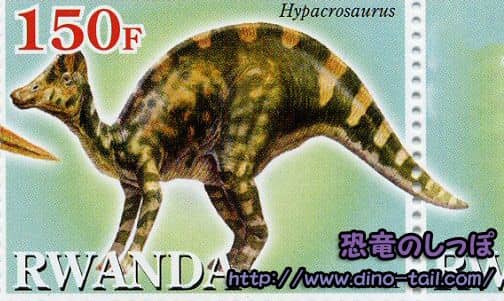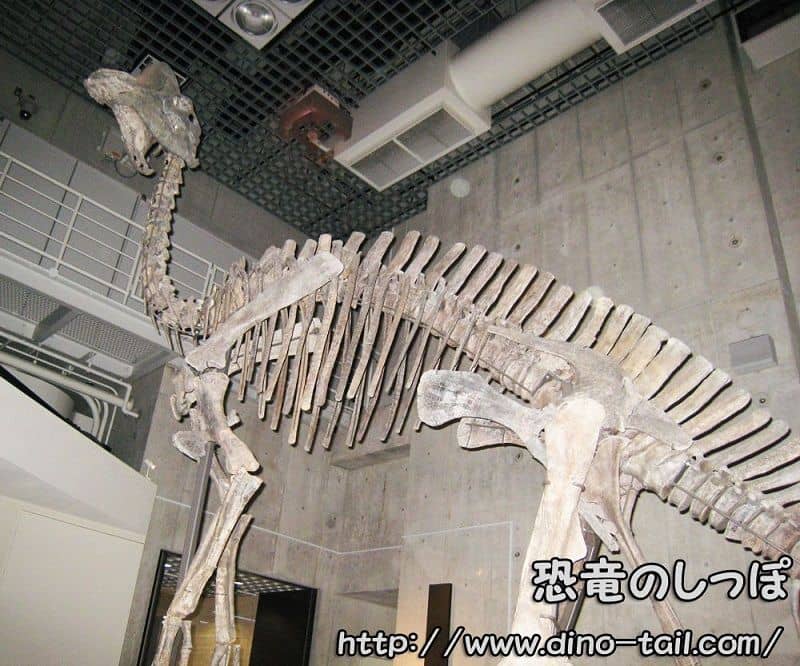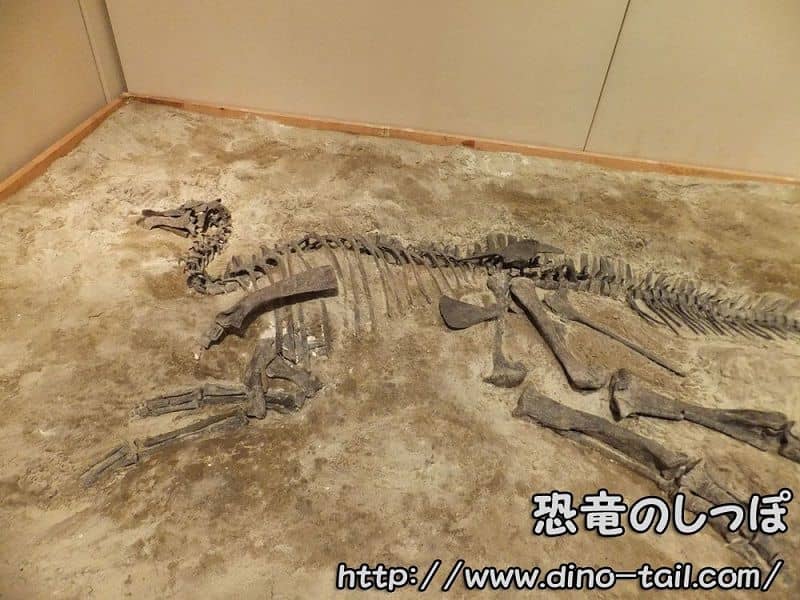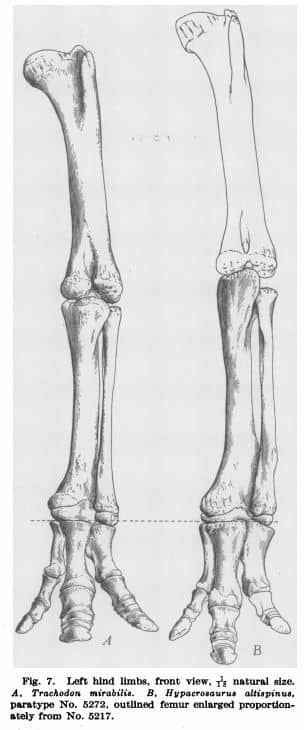About Hypacrosaurus
| Scientific Name (Genus) | Hypacrosaurus |
| Meaning of Name |
Near the highest lizard
hypo (less than) [Greek] - akros (highest) [Greek] - sauros (lizard) [Greek] |
| Classification | Ornithischia, Ornithopoda (Hadrosauridae) |
| Total Length | Approx. 9m |
| Diet | Herbivorous |
| Period | Late Cretaceous (approx. 75-67 million years ago) |
| Species |
Hypacrosaurus altispinus
(type species)
Hypacrosaurus stebingeri |
| Year of Paper Publication | 1913 |
| Genus Name Publication |
A new trachodont dinosaur, Hypacrosaurus, from the Edmonton Cretaceous of Alberta.
Bulletin of the American Museum of Natural History 32. by Barnum Brown. 1913. |
Features

The genus name Hypacrosaurus means "near the highest lizard." You might wonder what's so "high" about it, but the name comes from its height being comparable to that of the king, Tyrannosaurus.
Hypacrosaurus was a large ornithopod characterized by a hollow, rounded bony crest on its head, similar to Corythosaurus, and tall neural spines on its back. It lived in North America during the Late Cretaceous period (75-67 million years ago).

The hollow crest on its head was part of the nasal cavity, and by passing air through its complex internal tube-like structure, it could produce unique sounds. Since the shape of the crest differed by species, it is thought that their vocalizations also differed. They likely used it like a "musical instrument" with a unique tone for each species to communicate with others from a distance.
The Growth of Hypacrosaurus
Hypacrosaurus is one of the few dinosaurs whose entire life cycle can be studied, thanks to the discovery of eggs, nests, and fossils from various growth stages found together. In particular, the discovery of baby fossils with worn teeth inside nests with crushed eggshells strongly suggests that they remained in the nest for some time after hatching and were fed and cared for by their parents . Like their relative Maiasaura, they were "good parents."

The eggs of Hypacrosaurus were nearly spherical, about 20 cm in diameter. Inside, they contained embryos that would have been 60 cm long if stretched out.
They hatched at a length of 1.7 m, and a bony bump was already visible on their heads. They became capable of reproduction at 2-3 years old and reached a length of 9 meters by about age 10.
The growth rate of Hypacrosaurus was faster than that of large carnivorous dinosaurs.
It is believed that growing large quickly also served as a defense against carnivorous dinosaurs.
Ancient Cells? An Amazing Fossil Discovery
The study of Hypacrosaurus has brought us astonishing discoveries. In 2020, a detailed analysis of a baby Hypacrosaurus skull fossil found in Montana revealed that 75-million-year-old cartilage tissue had been preserved .
Even more surprisingly, structures resembling cell nuclei and chromosomes were identified within the cartilage cells. The research team reported a chemical reaction to what are believed to be DNA fragments using a special staining solution. While this claim of "dinosaur DNA discovery" still requires verification by scientists worldwide, it is a crucial discovery that suggests molecular-level information of ancient creatures may lie dormant within fossils.
Discovery and Description

Source: A new trachodont dinosaur, Hypacrosaurus, from the Edmonton Cretaceous of Alberta. Bulletin of the American Museum of Natural History 32. by Barnum Brown. 1913.
In 1910, paleontologist Barnum Brown excavated a partial skeleton, including vertebrae and parts of the pelvis, from the Horseshoe Canyon Formation on the Red Deer River in Alberta, Canada. Although no skull was found at the time, he presumed it was an ornithopod similar to Saurolophus, and in 1913, Barnum Brown described Hypacrosaurus.
In 1924, two more Hypacrosaurus skulls were discovered.
It has been suggested that Cheneosaurus tolmanensis, described by Lawrence Lambe in 1917, and Procheneosaurus, discovered in the Two Medicine Formation in Montana, USA, and described by American paleontologist Richard Swann Lull in 1920, may have been juvenile Hypacrosaurus.
